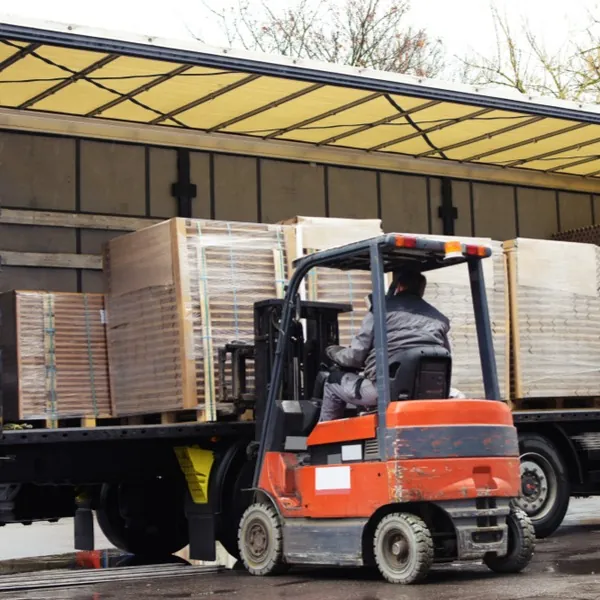From labor shortages and increases in online consumer shopping to seasonal peak shipping periods, capacity crunches hold all the economic ingredients to create a shipping headache. What exactly causes a shipping capacity crunch and the difficulty in booking shipments? Let’s go over what a capacity crunch is, how they happen, and how a shipping capacity crunch impacts your business.
What is a Capacity Crunch?
A capacity crunch is when the freight truck space and lane fulfillment supply cannot meet the demand for that space or those lanes. This is detrimental to both carriers and shippers. Shippers face increasing rates, and carriers have increased deadhead that causes them to lose money, and the limited capacity available leads to frustrating and uncertain conditions for shippers.
What Causes Capacity Crunches?
Capacity crunches happen for several reasons. These include:
-Labor shortages. If trucking companies are having a hard time finding drivers, that means fewer loads can be moved. Whether it be warehouses or 3PLs, other areas of the supply chain can also face labor shortages, which will not make the situation any better.
-Seasonal Peaks. The world of freight has its own calendar. Shipping seasons for different industries come and go all year long, and shipping during certain times of the year could mean less capacity available.
–Seasonal peaks also mean certain types of freight trucking equipment can be tight and hard to find. For example, temperature-controlled freight trucks are harder to come by in the spring and summertime, thanks to produce season.
-Natural disasters. Nobody can control Mother Nature; we have to respond accordingly. Transportation and supply chain attention is redirected when a natural disaster occurs to help the cause. Weather affects your freight shipment and the overall supply chain sometimes too.
–The unexpected. Nobody foresees global pandemics, cybersecurity attacks, or other 1950s sci-fi movie plots before they happen. COVID-19 has impacted the supply chain, from raw material shortages to limited operations in warehouses and other businesses. And as more of the world of commerce reopens, capacity is strained since demand increases.

How a Capacity Crunch Impacts Your Business
A capacity crunch impacts your business significantly. The most significant way is arguably the most crucial, and that’s an increase in freight rates. Simple supply and demand rules say the lower the supply of something in high demand, the more valuable (more expensive) that thing becomes. In this case, it’s space on the back of a freight truck. Capacity crunches are one of many factors that shape LTL and Truckload trends and rates.
The uncertainty of finding capacity also means there’s uncertainty in meeting the expectations of your customers. Consumer behaviors and expectations have considerably changed in the post-COVID supply chain, and people want their shipments faster and faster. How long will it take for you to send out the average load? How much will it cost for you and your customer? These are the types of nitty-gritty questions that arise in a capacity crunch.
Capacity crunches can also create a lack of easily accessible resources that strain your operations. If you rely on specific materials to create products, finding those materials for a reasonable price and ordering them to arrive on time are complex tasks to complete. Sometimes, finding the right amount of packaging material for your internal protocol and inventory can be challenging.
A capacity crunch impacts your business with fluctuating rates, uncertainty in finding equipment to move your goods, and even difficulty finding the resources and partners you need for effective shipping.
How to Overcome a Capacity Crunch
No matter how uncertain things might be in the freight market, there are steps you can incorporate into your overall supply chain that’ll help you overcome capacity crunches.
-Have a strategy. Always have a plan in place to be ready for anything. Business continuity plans come in handy during challenging times in the freight market.
-Communicate with customers. You don’t want a capacity crunch to cost you customers, so know how to manage customer shipping expectations. Be transparent in your transit estimates and returns processes so customers know what to expect.
–Be tech-savvy. Embrace the digital age of freight. A transportation management system (TMS) essentially centralizes and streamlines all your freight shipping needs, from carrier and rate search to tracking and shipment management.
–Be a smarter shipper. When the going gets tough, the tough get smarter. Start looking at different types of LTL carriers to find other lane solutions to ship through. Ask carriers about backhaul and head haul lanes you can take advantage of for more affordable rates and better transit times.
–Partner with a 3PL. Don’t deal with a capacity crunch alone. 3PLs have the infrastructure to make shipping easier for small business operators and shippers everywhere. A good 3PL will have a thoroughly vetted network of freight carriers, discounted rates that only 3PLs can get from carriers, and the means to streamline your search for freight solutions.
Don’t let a capacity crunch impact your business. Our expert shipping agents can help you navigate and find the capacity you need when you need it. Experience the FreightCenter difference today by calling (844)212-7447 or getting a free online quote.


